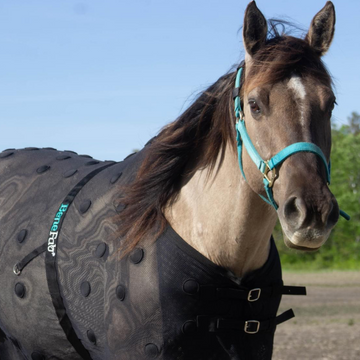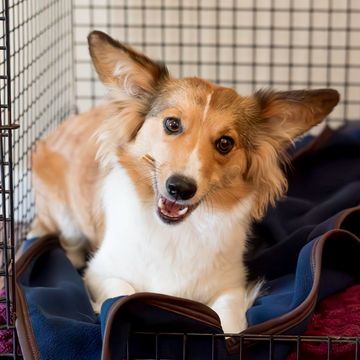Dog leg injuries are a common concern for pet owners, as they can significantly impact a dog's quality of life and mobility. These injuries range from minor sprains and strains to more severe conditions like fractures or ligament tears. Understanding the recovery process and time frame is essential in helping our canine companions heal safely and effectively.
The recovery time for a dog's leg injury depends on various factors, such as the type and severity of the injury, the dog's age and overall health, and the quality of care and treatment provided. Early detection, prompt veterinarian intervention, and appropriate aftercare can substantially influence the healing process and minimize potential complications.
 Throughout the recovery period, it is crucial to closely monitor your dog's progress and follow your veterinarian's recommendations for pain management, physical therapy, and any necessary restrictions to their activity level. By taking these steps, you will support your dog's healing and help them return to their normal, active lifestyle as soon as possible.
Throughout the recovery period, it is crucial to closely monitor your dog's progress and follow your veterinarian's recommendations for pain management, physical therapy, and any necessary restrictions to their activity level. By taking these steps, you will support your dog's healing and help them return to their normal, active lifestyle as soon as possible.
Dog Leg Injuries
Causes of Leg Injuries
- Trauma: accidents like car collisions, falls, slipping on ice, or stepping into holes.
- Roughhousing: can lead to sprains, strains, or fractures.
- Underlying health issues: joint problems (arthritis, hip dysplasia) can make dogs more prone to injuries.
- Overexertion: high-intensity activities such as running, jumping, or agility courses.
Types of Leg Injuries
- Bone Fractures: Common leg injuries in dogs, varying in severity. Treatment options include splinting, casting, or surgery with pins, plates, or screws.
- Ligament Injuries: Frequent leg injuries, like cranial cruciate ligament (CCL) tears, affect stability and cause pain. Treatment ranges from rest and meds to joint stabilization surgery.
- Muscle Strains/Tears: Due to overexertion, trauma, or weakness. Signs: limping, pain, swelling. Recovery depends on severity; treatment involves rest, pain management, and physical therapy.
- Joint Damage: Arthritis, hip dysplasia, and ankle sprains contribute to joint problems—symptoms: pain, stiffness, swelling. Treatment includes pain management, meds, weight control, surgery for severe cases.
Signs and Symptoms
- Swelling: size/shape changes.
- Lameness/Limping: trouble bearing weight.
- Pain: increased discomfort, whimpering.
- Infection: Pus, odor, redness.
- Bleeding: Should clean and stop any excessive bleeding.
- Bruising: Skin/fur discoloration.
Treatment Options
Non-Surgical Treatments
There are several non-surgical treatment options available for dog leg injuries, all aimed at reducing pain and promoting healing. A vet may prescribe nonsteroidal anti-inflammatory drugs (NSAIDs) to manage pain and inflammation. Physical therapy and rehab are often recommended to strengthen the injured leg and improve mobility. Other non-surgical treatments include:
- Laser Therapy: A form of light therapy that stimulates cell regeneration, promotes healing, and alleviates pain.
- Medication: In addition to NSAIDs, other medications, such as opioids or muscle relaxants, may be prescribed to manage pain during the recovery process.
- Assistive Devices: Slings, braces, or custom orthotics may be used to support the injured leg, allowing the dog to move with minimal stress on the affected area. Some great options are the Benefab Comfort Care Sleeves and Suit in the Benefab® Canine Line.
Surgical Treatments
For more severe injuries, surgical treatments may be necessary. A vet will assess the type and extent of the injury to determine the best course of action. Common surgical procedures for dog leg injuries include:
- Joint stabilization: To repair torn ligaments or tendons, internal or external fixation devices may be used to provide support during the healing process.
- Fracture repair: In cases of broken bones, a vet may need to place pins, plates, or screws to stabilize the affected area.
Recovery and Rehabilitation
Rest and Physical Restrictions
During the initial stages of recovery, it is essential for dogs to have adequate rest to prevent further injury to the affected leg. Crate rest or limiting the dog's movement within a confined area can be helpful in reducing physical activity. This rest period typically lasts for a few weeks, depending on the severity of the injury.
Physical Therapy and Exercise
As the dog's recovery progresses, introducing physical therapy exercises can help strengthen joints and bones in the injured leg. Passive range of motion exercises, where the caretaker gently moves the dog's leg through its normal range of motion, can be beneficial for maintaining joint flexibility and preventing stiffness.
Always consult your veterinarian before implementing new exercises or therapies into your dog's rehabilitation plan.
Follow-up Care
Regular follow-up visits with your veterinarian will help track your dog's progress and make any necessary adjustments to its rehabilitation plan. These appointments may also include updates on when your dog can resume certain activities, such as walking, running, or jumping.
By adhering to the advice of your veterinarian and closely monitoring your dog's recovery, you can help ensure that they regain their strength and mobility in a safe and efficient manner.
Prognosis and Long-Term Outcomes
The prognosis for a dog with a leg injury depends on the severity of the injury, the treatment provided, and the dog's overall health. In cases with neurological conditions affecting the hind legs, such as degenerative myelopathy, the prognosis can be poor, as the condition will progressively worsen over time.
For dogs with injuries to the cranial cruciate ligament (CCL) in the hind legs, the prognosis is generally good if the injury is diagnosed and treated promptly. Surgical intervention, such as tibial plateau leveling osteotomy (TPLO) surgery, can provide a high success rate in stabilizing the joint and minimizing long-term joint damage. Proper rehabilitation following surgery is crucial for a successful recovery.
After treatment, a dog's recovery time may vary based on factors such as:
- The type of injury, including whether it involved the CCL, hind leg muscles, or bones
- The dog's age and overall health
- The specific treatment provided (e.g., TPLO surgery, conservative management)
In many cases, a dog can return to normal activity within a few months, with full recovery taking up to six months or longer for more severe injuries.
During the recovery process, a dog may experience some short-term limitations, such as:
- Restricted mobility: The dog may need to limit their activity, especially high-impact exercises until they have fully healed.
- Pain and inflammation: Medications can help manage pain and inflammation, but a low level of discomfort may persist for some time.
- Physical therapy: Rehabilitation exercises can help restore strength and mobility in the injured leg, but the process may take several weeks or months to complete.
In addition to these short-term challenges, some dogs may face long-term outcomes, such as a higher risk for arthritis or other degenerative joint conditions due to their injury. Regular veterinary check-ups, weight management, and joint supplements can help maintain a dog's joint health and minimize the risk of these long-term complications.
The prognosis for dogs with leg injuries largely depends on the nature of the injury, the treatment provided, and the dog's overall health. With proper care and rehabilitation, many dogs can recover from leg injuries and enjoy a good quality of life.






















